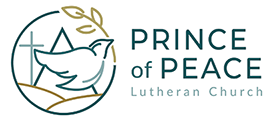Today’s Author: Carol Swanson

As summer starts cooling into fall, I work in my garden, seeing who needs to move to a better spot, who is overcrowded, who needs more shade or more sun. I find working in the garden very meditative. So in the last few weeks, I’ve also been re-reading one of my very favorite books, Braiding Sweetgrass: Indigenous Wisdom, Scientific Knowledge, and the Teaching of Plants by Robin Wall Kimmerer, botanist and member of the Citizen Potawatomi Nation. She so eloquently brings these very different worldviews together to show us what we can learn from nature. A book well worth meditating on.
As an adult, Robin has been learning the language of her people. Vocabulary reflects what is important: Wonderful words like Puhpowee, “the force which causes mushrooms to push up from the earth overnight;” many words for “thank you” but none for “please” in a culture that assumes that one shares food. She writes of the grammar that reflects the difference in worldview. In English, you are either a human or a thing, an “it.” But for her people, nouns are classified as animate or inanimate. The ones that are inanimate are items made by people, like a table. All animals, plants, rocks, sky—each of these is animate; alive, in some way, beings.
Sacred songs, drums, and stories are also “imbued with spirit.” And there is a difference in the verbs “to be” as well. Robin gives the examples: For a table we ask “What is it?” We answer Dopwen yewe. Table it is. But for an apple: “Who is that being?” We answer Mshimin yawe. Apple that being is. Then Robin shares something serendipitous: (Maybe you’ve already noticed?) She writes, “Yawe—the animate to be. I am, you are, s/he is. To speak of those possessed with life and spirit we must say yawe. By what linguistic confluence do Yahweh of the Old Testament and yawe of the New World both fall from the mouths of the reverent? Isn’t this just what it means to be, to have the breath of life within, to be the offspring of Creation? The language reminds us in every sentence, of our kinship with all the animate world.” (p 56)
In so many stories and moments Robbin demonstrates the interconnectedness of species, plants and animals. Most simply put, she writes, “The breath of plants gives life to animals and the breath of animals gives life to plants. My breath is your breath, your breath is mine. It’s the great poem of give and take, of reciprocity that animates the world. Isn’t that a story worth telling?” (p 344)
I read again the creation hymn in Genesis 1 and ponder the words. “In the beginning when God created the heavens and the earth,… a wind from God swept over the face of the waters….” Wind, spirit, breath—all translations for the same word.
And then, “’Let the earth put forth vegetation: plants yielding seed.…’ The earth brought forth vegetation…. And God saw that it was good.” I was surprised and delighted a few years ago when Process theologian John Cobb pointed out that this language shows God calling creation into being and allowing it freedom to become what it is. Like indigenous wisdom says, the world is alive, enspirited by the Creator and therefore deserves respect and loving care.
Let us pray Psalm 96:11-13. “Let the heavens be glad, and let the earth rejoice; let the sea roar, and all that fills it; let the field exult and everything in it. Then shall all the trees of the forest sing for joy before the LORD ;…for he is coming to judge the earth. He will judge the world with righteousness, and the peoples with his truth.” Your judgment and truth will make us whole. Amen.
(You can also listen to Krista Tippett interview Robin at https://onbeing.org/programs/robin-wall-kimmerer-the-intelligence-of-plants/).
“Mid-week devotions are authored by members of our community. If you are interested in creating a trio of reflections to be shared on an upcoming Tuesday, Wednesday, and Thursday contact Pastor Peter.“
